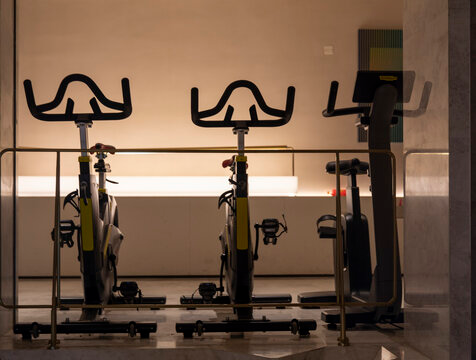How to Ride a Spinning Bike Safely and Effectively
Before class begins, take a minute to set up the bike so your joints move comfortably. Adjust the saddle height so your knee has a slight bend at the bottom of the pedal stroke rather than locking out, slide the saddle fore–aft so your forward knee tracks roughly over the pedal axle, and raise the handlebar to a height that lets you keep a long spine with relaxed shoulders. Secure your feet in the cages or clips so you can push and pull smoothly without gripping with your toes.
A short warm‑up prepares the knees, thighs, and waist for work. Start with five to ten minutes of easy pedaling, gradually adding a little resistance. Gentle dynamic mobility for the hips and hamstrings—such as controlled leg swings or a comfortable standing hamstring stretch—helps reduce stiffness, and a brief side‑body reach to each side can wake up the trunk muscles that stabilize you on the bike. Keep movements pain‑free and save longer holds for after the ride.
During the ride, aim for smooth circles rather than choppy strokes. Keep your shoulders down, hands relaxed on the bars, and your core lightly braced so the pelvis stays stable. Let the knees track forward in line with the feet, and avoid letting them cave inward. Match your cadence to the music or instructor, but choose a resistance that allows control; it is better to turn the knob slightly heavier than to pedal with no load and “spin out.”
For uphill efforts, increase resistance gradually and lean the torso slightly forward from the hips while keeping a neutral spine. If you stand out of the saddle, keep the hips hovering over the pedals, distribute weight through the mid‑foot, and drive the stroke with the thighs and hips. Maintain a small bend in the knees at full extension and avoid locking them straight. Strong breathing and a steady rhythm help keep effort sustainable; return to the saddle when technique starts to fade.
Recovery segments feel like going downhill. Reduce resistance to a comfortable level—always leaving some load on the wheel for control—and keep your hands lightly on the bars while you sit tall and breathe. Shake out tension in the upper body, sip water, and let the heart rate come down before the next working block. Taking hands completely off the bars is not recommended in class for safety, especially when the flywheel is moving.
Finish with a few easy minutes of pedaling to cool down, then stretch the hips, quads, hamstrings, and calves as needed. If you notice knee pain, lower‑back discomfort, unusual shortness of breath, dizziness, or palpitations, ease off and ask the instructor to check your setup; stop and seek medical advice if symptoms persist. With a good fit, a gradual warm‑up, mindful technique, and sensible resistance choices, indoor cycling delivers a joint‑friendly cardio workout that scales to any fitness level.







